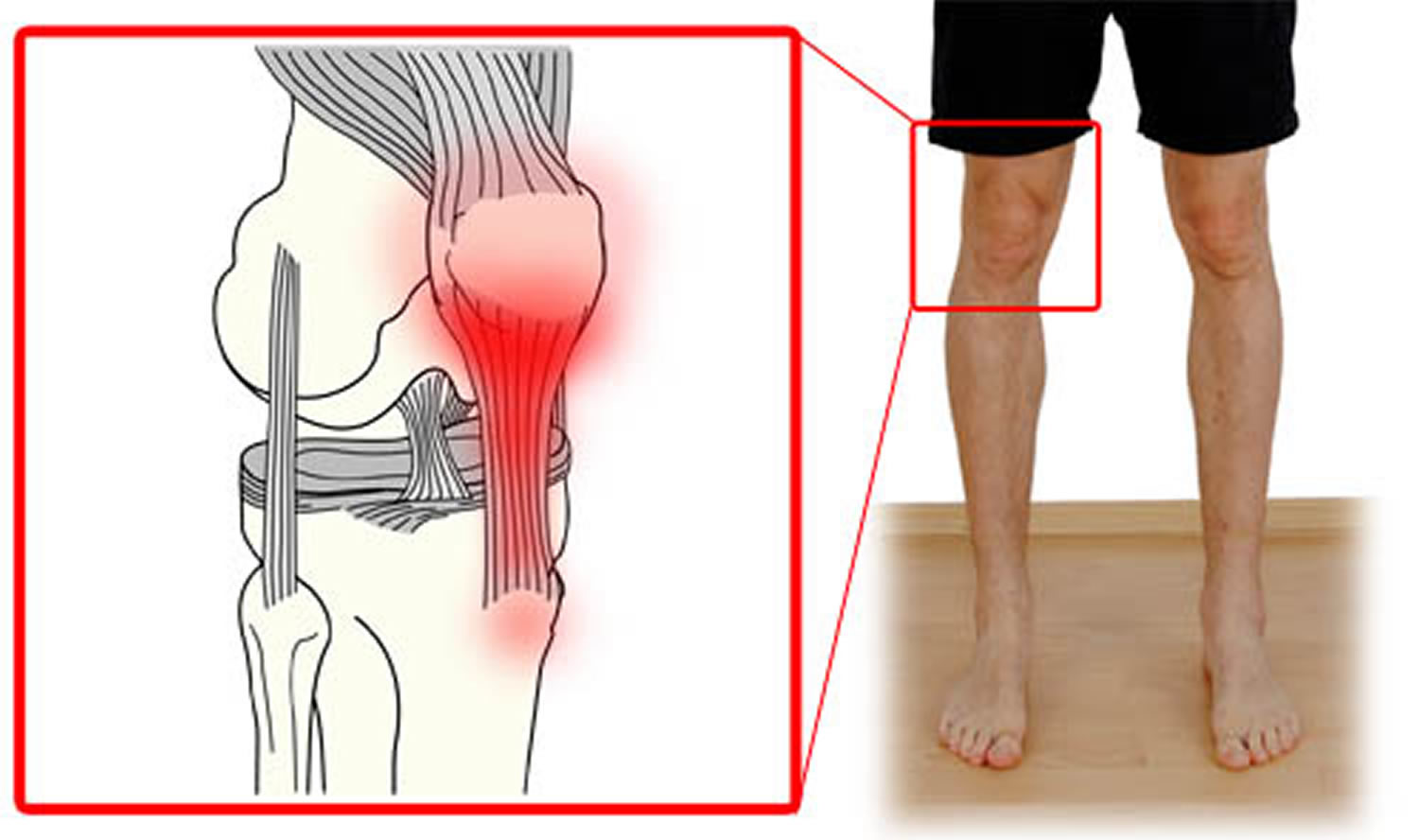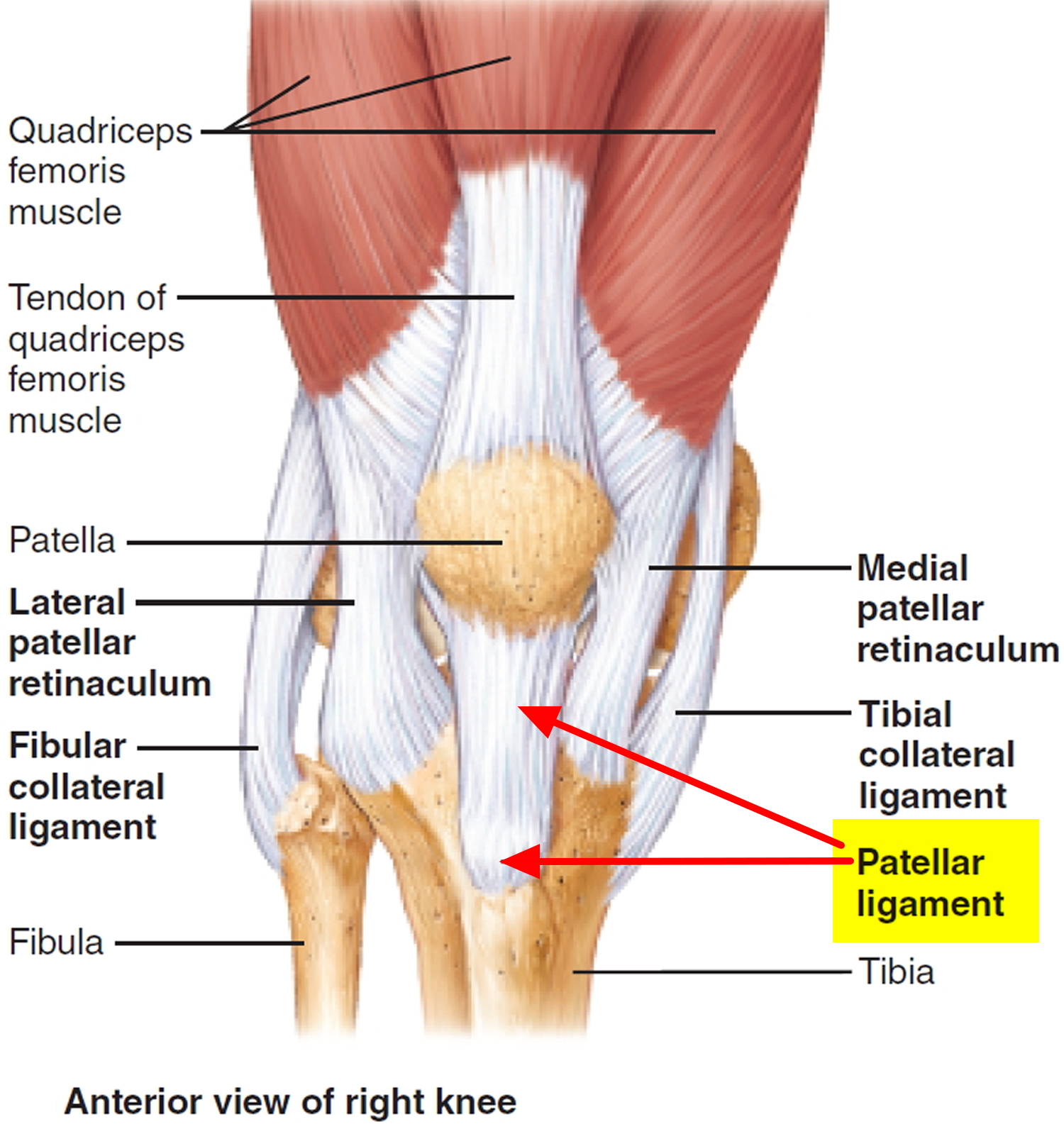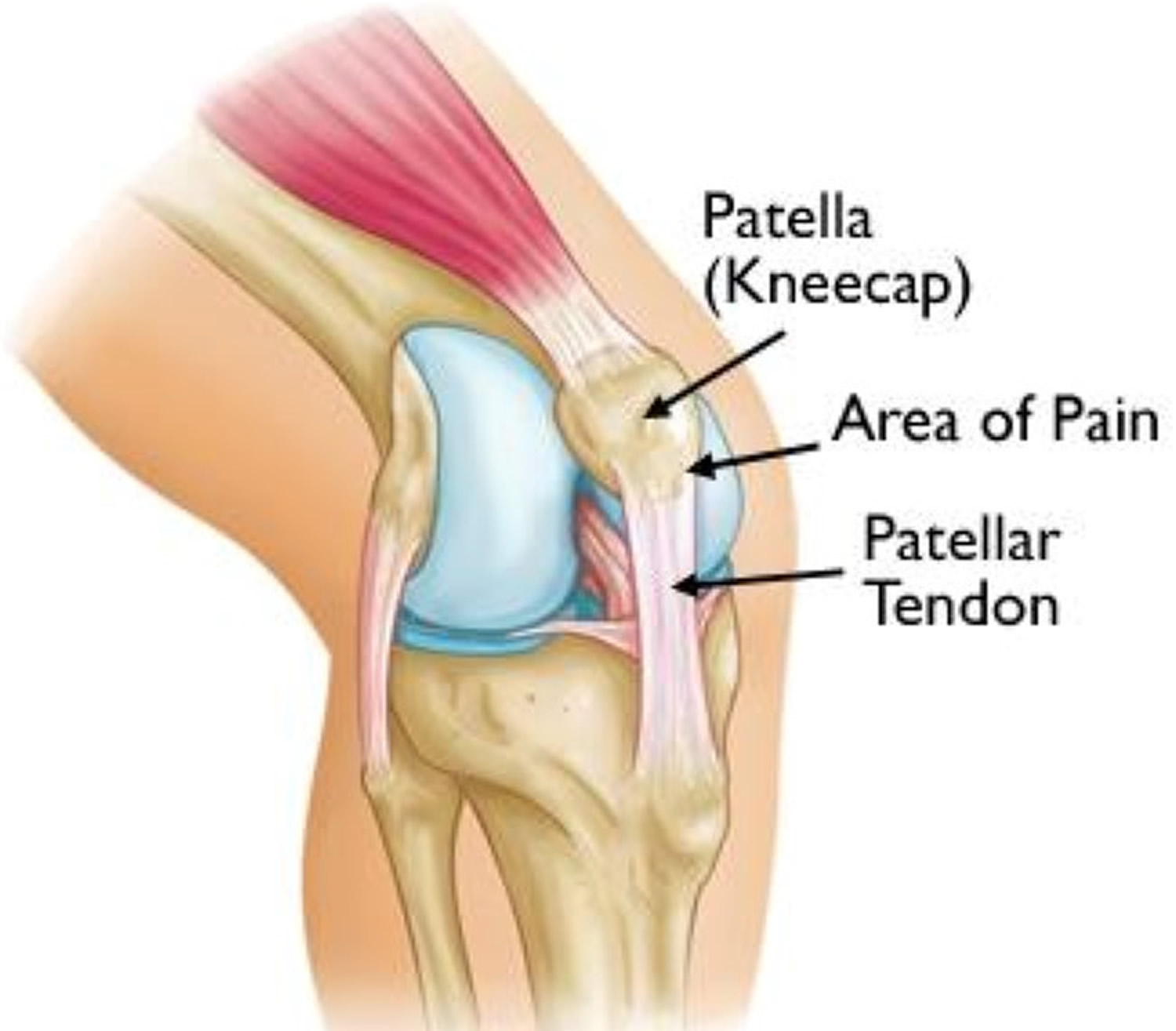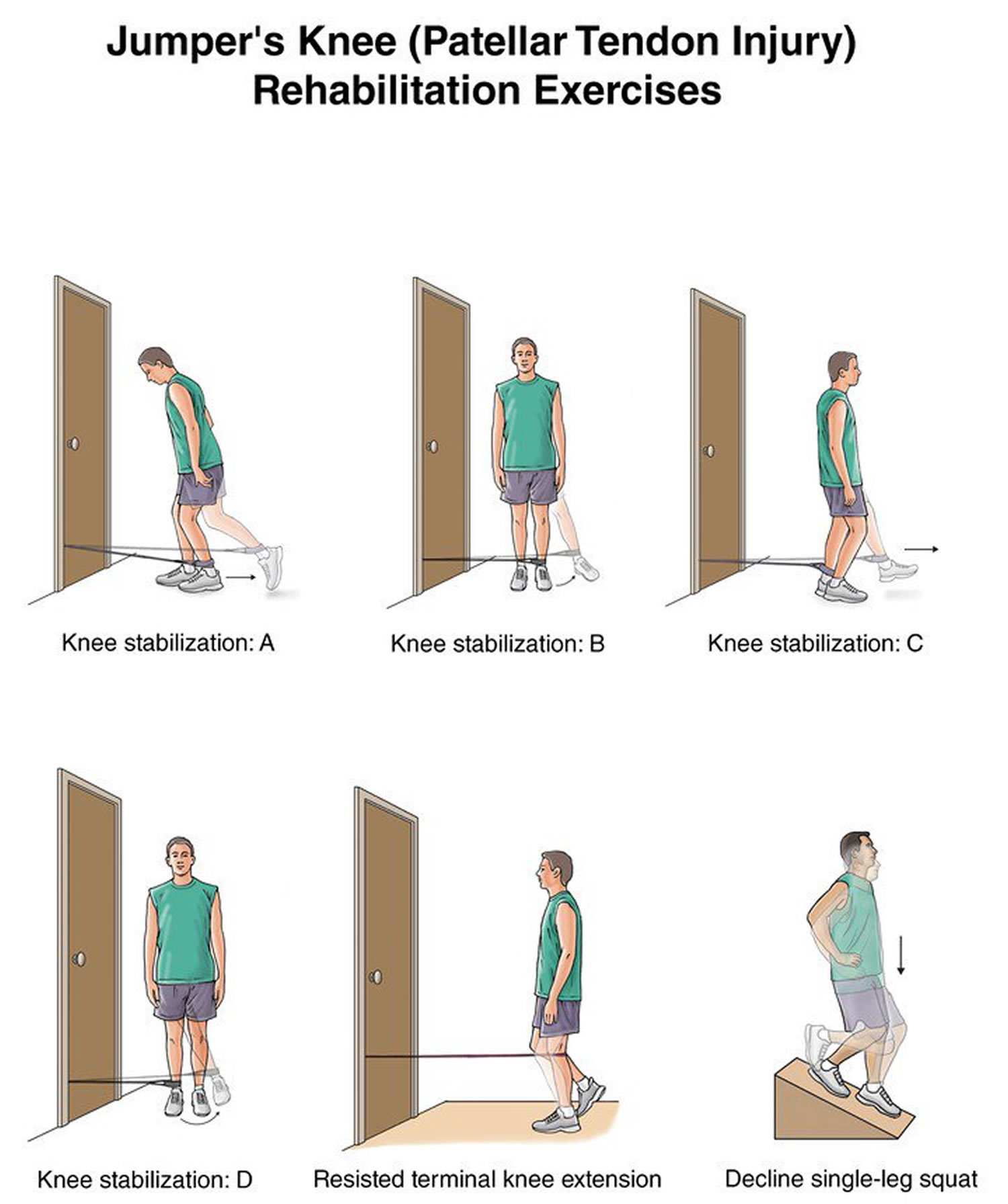Contents
What is patellar tendinitis
Patellar tendinitis also known as jumper’s knee or patellar tendinopathy — is an inflammation or injury of the patellar tendon, the cord-like tissue that joins the patella (kneecap) to the tibia (shin bone) (see Figure 1). The patellar tendon works with the muscles at the front of your thigh to extend your knee so you can kick, run and jump. Patellar tendinitis (jumper’s knee) is an overuse injury (when repeated movements cause tissue damage or irritation to a particular area of the body).
Repetitive contraction of the quadriceps muscles in the thigh can stress the patellar tendon where it attaches to the kneecap, causing inflammation and tissue damage (this condition is also known as patellar tendinitis).
Constant jumping, landing, and changing direction can cause strains, tears, and damage to the patellar tendon. So kids who regularly play sports that involve a lot of repetitive jumping — like track and field (particularly high-jumping), basketball, volleyball, gymnastics, long distance running, and soccer — can put a lot of strain on their knees 1.
Patellar tendinitis can seem like a minor injury that isn’t really that serious. Because of this, many athletes keep training and competing and tend to ignore the injury or attempt to treat it themselves. But it’s important to know that Patellar tendinitis is a serious condition that can get worse over time and ultimately require surgery. Early medical attention and treatment can help prevent continued damage to the knee.
Patellar tendinitis complications
If you try to work through your pain, ignoring your body’s warning signs, you could cause increasingly larger tears in the patellar tendon. Knee pain and reduced function can persist if you don’t tend to the problem, and you may progress to the more serious patellar tendinopathy.
Jumper’s knee can also result in a fracture if a child continues to participate in sports activity without adequate rest. A fracture at the lower end of the kneecap will require treatment with casting or surgery, depending upon the type of fracture. The recovery time for a fracture of the patella requires prolonged absence from sports.
The Knee Joint
To understand how patellar tendinitis happens, it helps to understand how the knee works. The knee, which is the largest joint in the body, provides stability to the leg and allows it to bend, swivel, and straighten. Several parts of the body interact to allow the knee to function properly:
- Bones like the femur (thighbone), the tibia (shinbone), and the patella (kneecap) give the knee the strength needed to support the weight of the body. The bones that meet at the knee allow it to bend smoothly.
- Muscles provide the tug on the bones needed to bend, straighten, and support joints. The muscles around the knee include the quadriceps (at the front of the thigh) and the hamstring (on the back of the thigh). The quadriceps muscle helps straighten and extend the leg, and the hamstring helps bend the knee.
- Tendons are strong bands of tissue that connect muscles to bones. The tendons in the front of the knee are the quadriceps tendon and the patellar tendon.
- The quadriceps tendon connects to the top of the patella and allows the leg to extend. The patellar tendon connects to the bottom of the kneecap and attaches to the top of the tibia.
- Similar to tendons, ligaments are strong bands of tissue that connect bones to other bones.
By working together, bones, muscles, tendons, and ligaments enable the knee to move, bend, straighten, provide strength to jump, and stabilize the leg for landing.
When the knee is extended, the quadriceps muscle pulls on the quadriceps tendon, which in turn pulls on the patella. Then, the patella pulls on the patellar tendon and the tibia and allows the knee to straighten. In contrast, when bending the knee, the hamstring muscle pulls on the tibia, which causes the knee to flex.
In patellar tendinitis, the patellar tendon is damaged (inflamed). Since this tendon is crucial to straightening the knee, damage to it causes the patella to lose any support or anchoring. This causes pain and weakness in the knee, and leads to difficulty in straightening the leg.
Figure 1. Patella tendon (ligament)
Patellar tendinitis causes
Patellar tendinitis is a common overuse injury, caused by repeated stress on your patellar tendon. The stress results in tiny tears in the tendon, which your body attempts to repair. But as the tears in the tendon multiply, they cause pain from inflammation and weakening of the tendon. When this tendon damage persists for more than a few weeks, it’s called tendinopathy.
Risk factors for patellar tendinitis
A combination of factors may contribute to the development of patellar tendinitis, including:
- Physical activity. Running and jumping are most commonly associated with patellar tendinitis. Sudden increases in how hard or how often you engage in the activity also add stress on the tendon, as can changing your running shoes.
- Tight leg muscles. Tight thigh muscles (quadriceps) and hamstrings, which run up the back of your thighs, can increase strain on your patellar tendon.
- Muscular imbalance. If some muscles in your legs are much stronger than others, the stronger muscles could pull harder on your patellar tendon. This uneven pull could cause tendinitis.
Patellar tendinitis prevention
The most important factor in preventing patellar tendinitis is stretching. A good warm-up regimen that involves stretching the quadriceps, hamstring, and calf muscles can help prevent jumper’s knee. It’s always a good idea to stretch after exercising, too.
- Don’t play through pain. As soon as you notice exercise-related knee pain, ice the area and rest. Until your knee is pain-free, avoid activities that put stress on your patellar tendon.
- Strengthen your muscles. Strong thigh muscles are better able to handle the stresses that can cause patellar tendinitis. Eccentric exercises, which involve lowering your leg very slowly after flexing your knee, are particularly helpful.
- Improve your technique. To be sure you’re using your body correctly, consider taking lessons or getting professional instructions when starting a new sport or using exercise equipment.
Patellar tendinitis symptoms
Common symptoms of patellar tendinitis include:
- pain directly over the patellar tendon (or more specifically, below the kneecap)
- stiffness of the knee, particularly while jumping, kneeling, squatting, sitting, or climbing stairs
- pain when bending the knee
- pain in the quadriceps muscle
- leg or calf weakness
Less common symptoms include:
- balance problems
- warmth, tenderness, or swelling around the lower knee
Patellar tendinitis diagnosis
Patellar tendinitis is first evaluated by a grading system that measures the extent of the injury (grades range from 1 to 5, with grade 1 being pain only after intense activity and grade 5 being daily constant pain and the inability to participate in any sporting activities).
In the case of patellar tendinitis, tenderness to palpation of the tendon is most often located at the origin of the tendon at the inferior pole of the patella 2.
While examining the knee, a doctor or medical professional will ask you to run, jump, kneel, or squat to determine the level of pain. In addition, an X-ray or MRI might be recommended. Depending on the grade of the injury, treatment can range from rest and icepacks to surgery.
Patellar tendinitis treatments
For mild to moderate patellar tendinitis, treatment includes:
- resting from activity or adapting a training regimen that greatly reduces any jumping or impact
- icing the knee to reduce pain and inflammation
- wearing a knee support or strap (called an intrapatellar strap or a Chopat strap) to help support the knee and patella. The strap is worn over the patellar tendon, just beneath the kneecap. A knee support or strap can help minimize pain and relieve strain on the patellar tendon.
- elevating the knee when it hurts (for example, placing a pillow under the leg)
- anti-inflammatory medications, like ibuprofen, to minimize pain and swelling
- massage therapy
- minimum-impact exercises to help strengthen the knee
- rehabilitation programs that include muscle strengthening, concentrating on weight-bearing muscle groups like the quadriceps and calf muscles
- Iontophoresis. This therapy involves spreading a corticosteroid medicine on your skin and then using a device that delivers a low electrical charge to push the medication through your skin.
- specialized injections to desensitize nerve endings and reduce inflammation
On rare occasions, such as when there’s persistent pain or the patellar tendon is seriously damaged, patellar tendinitis requires surgery. Surgery includes removing the damaged portion of the patellar tendon, removing inflammatory tissue from the lower area (or bottom pole) of the patella, or making small cuts on the sides of the patellar tendon to relieve pressure from the middle area.
After surgery, a rehabilitation program involving strengthening exercises and massage is followed for several months to a year.
How to treat patellar tendinitis yourself
- Avoid activity that causes pain. You may need to practice your sport less often or temporarily switch to a lower impact sport. Working through pain can further damage your patellar tendon.
- Pain relievers such as NSAIDs (Non-Steroidal Anti-Inflammatory Drugs) like ibuprofen or naproxen sodium may provide short-term relief from pain associated with patellar tendinitis.
Follow the 4 steps known as RICE therapy for 2 to 3 days to help bring down swelling and support the injury:
- Rest – stop the exercise or activities that caused the injury until you feel better
- Ice – put an ice pack (you could use a bag of frozen peas wrapped in a tea towel) on the injury for up to 20 minutes every 2 to 3 hours
- Compress – wrap a bandage around the injury to support it
- Elevate – if possible, keep the injured knee raised on a pillow when sitting or lying down
To help prevent swelling during the first 2 to 3 days, try to avoid:
- heat, such as hot baths and heat packs
- alcohol
- massages
When you can move the injured area without pain stopping you, try to keep moving it so the tendon doesn’t become stiff.
Recovery
Recovering from patellar tendinitis can take a few weeks to several months. It’s best to stay away from any sport or activity that can aggravate the knee and make conditions worse.
However, recovering from patellar tendinitis doesn’t mean that you can’t participate in any sports or activities. Depending on the extent of the injury, low-impact sports or activities can be substituted (for instance, substituting swimming for running). Your doctor will let you know what sports and activities are off-limits during the healing process.
Physical therapy
A variety of patellar tendinitis exercises techniques can help reduce the symptoms associated with patellar tendinitis, including:
- Stretching exercises. Regular, steady stretching exercises can reduce muscle spasm and help lengthen the muscle-tendon unit. Don’t bounce during your stretch.
- Strengthening exercises. Weak thigh muscles contribute to the strain on your patellar tendon. Exercises that involve lowering your leg very slowly after flexing it are particularly helpful.
- Patellar tendinitis patellar tendon strap. One common intervention used for patients with patellar tendon pain is the use of counterforce bracing or taping. In spite of the very common use of this intervention, very limited evidence exists to support its use. Miller, Hinkin, and Wisnowski 3 focused on the effect of counterforce bracing on knee pain in military trainees. While their results did not support use of counterforce bracing for “anterior knee pain” in the research subjects, no specific mention was made of patellar tendon pain. Recently, a randomized controlled trial compared the effect of a patellar strap, patellar taping, and sham taping on patellar tendon pain in a group of subjects with patellar tendinopathy 4. The investigators found a decrease in patellar tendon pain with a single leg decline squat and during sport activity when taped or braced as compared to no tape or brace. However, there was no difference between taping, sham taping, and bracing.
Patellar tendinitis exercises
You can do the first 4 exercises right away. When you have less pain in your knee, you can do the remaining exercises.
- Standing hamstring stretch: Put the heel of the leg on your injured side on a stool about 15 inches high. Keep your leg straight. Lean forward, bending at the hips, until you feel a mild stretch in the back of your thigh. Make sure you don’t roll your shoulders or bend at the waist when doing this or you will stretch your lower back instead of your leg. Hold the stretch for 15 to 30 seconds. Repeat 3 times.
- Quadriceps stretch: Stand at an arm’s length away from the wall with your injured side farthest from the wall. Facing straight ahead, brace yourself by keeping one hand against the wall. With your other hand, grasp the ankle on your injured side and pull your heel toward your buttocks. Don’t arch or twist your back. Keep your knees together. Hold this stretch for 15 to 30 seconds.
- Side-lying leg lift: Lie on your uninjured side. Tighten the front thigh muscles on your injured leg and lift that leg 8 to 10 inches (20 to 25 centimeters) away from the other leg. Keep the leg straight and lower it slowly. Do 2 sets of 15.
- Rectus femoris stretch: Kneel on your injured knee on a padded surface. Place your other leg in front of you with your foot flat on the floor. Keep your head and chest facing forward and upright and grab the ankle behind you. Gently bring your ankle back toward your buttocks until you feel a stretch in the front of your thigh. Hold 15 to 30 seconds. Repeat 2 to 3 times.
- Straight leg raise: Lie on your back with your legs straight out in front of you. Bend the knee on your uninjured side and place the foot flat on the floor. Tighten the thigh muscle on your injured side and lift your leg about 8 inches off the floor. Keep your leg straight and your thigh muscle tight. Slowly lower your leg back down to the floor. Do 2 sets of 15.
- Prone hip extension: Lie on your stomach with your legs straight out behind you. Fold your arms under your head and rest your head on your arms. Draw your belly button in towards your spine and tighten your abdominal muscles. Tighten the buttocks and thigh muscles of the leg on your injured side and lift the leg off the floor about 8 inches. Keep your leg straight. Hold for 5 seconds. Then lower your leg and relax. Do 2 sets of 15.
- Clam exercise: Lie on your uninjured side with your hips and knees bent and feet together. Slowly raise your top leg toward the ceiling while keeping your heels touching each other. Hold for 2 seconds and lower slowly. Do 2 sets of 15 repetitions.
- Step-up: Stand with the foot of your injured leg on a support 3 to 5 inches (8 to 13 centimeters) high –like a small step or block of wood. Keep your other foot flat on the floor. Shift your weight onto the injured leg on the support. Straighten your injured leg as the other leg comes off the floor. Return to the starting position by bending your injured leg and slowly lowering your uninjured leg back to the floor. Do 2 sets of 15.
- Wall squat with a ball: Stand with your back, shoulders, and head against a wall. Look straight ahead. Keep your shoulders relaxed and your feet 3 feet (90 centimeters) from the wall and shoulder’s width apart. Place a soccer or basketball-sized ball behind your back. Keeping your back against the wall, slowly squat down to a 45-degree angle. Your thighs will not yet be parallel to the floor. Hold this position for 10 seconds and then slowly slide back up the wall. Repeat 10 times. Build up to 2 sets of 15.
- Knee stabilization: Wrap a piece of elastic tubing around the ankle of your uninjured leg. Tie a knot in the other end of the tubing and close it in a door at about ankle height (see Figure 4). Hold onto a chair if you need help balancing. This exercise can be made more challenging by standing on a firm pillow or foam mat while you move the leg with tubing.
- Stand facing the door on the leg without tubing (your injured leg) and bend your knee slightly, keeping your thigh muscles tight. Stay in this position while you move the leg with the tubing (the uninjured leg) straight back behind you. Do 2 sets of 15.
- Turn 90 degrees so the leg without tubing is closest to the door. Move the leg with tubing away from your body. Do 2 sets of 15.
- Turn 90 degrees again so your back is to the door. Move the leg with tubing straight out in front of you. Do 2 sets of 15.
- Turn your body 90 degrees again so the leg with tubing is closest to the door. Move the leg with tubing across your body. Do 2 sets of 15.
- Resisted terminal knee extension: Make a loop with a piece of elastic tubing by tying a knot in both ends. Close the knot in a door at knee height. Step into the loop with your injured leg so the tubing is around the back of your knee. Lift the other foot off the ground and hold onto a chair for balance, if needed. Bend the knee with tubing about 45 degrees. Slowly straighten your leg, keeping your thigh muscle tight as you do this. Repeat 15 times. Do 2 sets of 15. If you need an easier way to do this, stand on both legs for better support while you do the exercise.
- Decline single-leg squat: Stand with both feet on an angled platform or with your heels on a board about 3 inches (8 centimeters) high. Put all of your weight on your injured leg and squat down to a 45-degree angle. Use your other leg to help you return to a standing position from the squat. You should lower your body to a squat using only your injured leg but you can use both legs to return to standing. When this exercise gets easy, hold weights in your hands to make the exercise more difficult. Do 2 sets of 15.
Figure 3. Patellar tendinitis exercises (part 1)
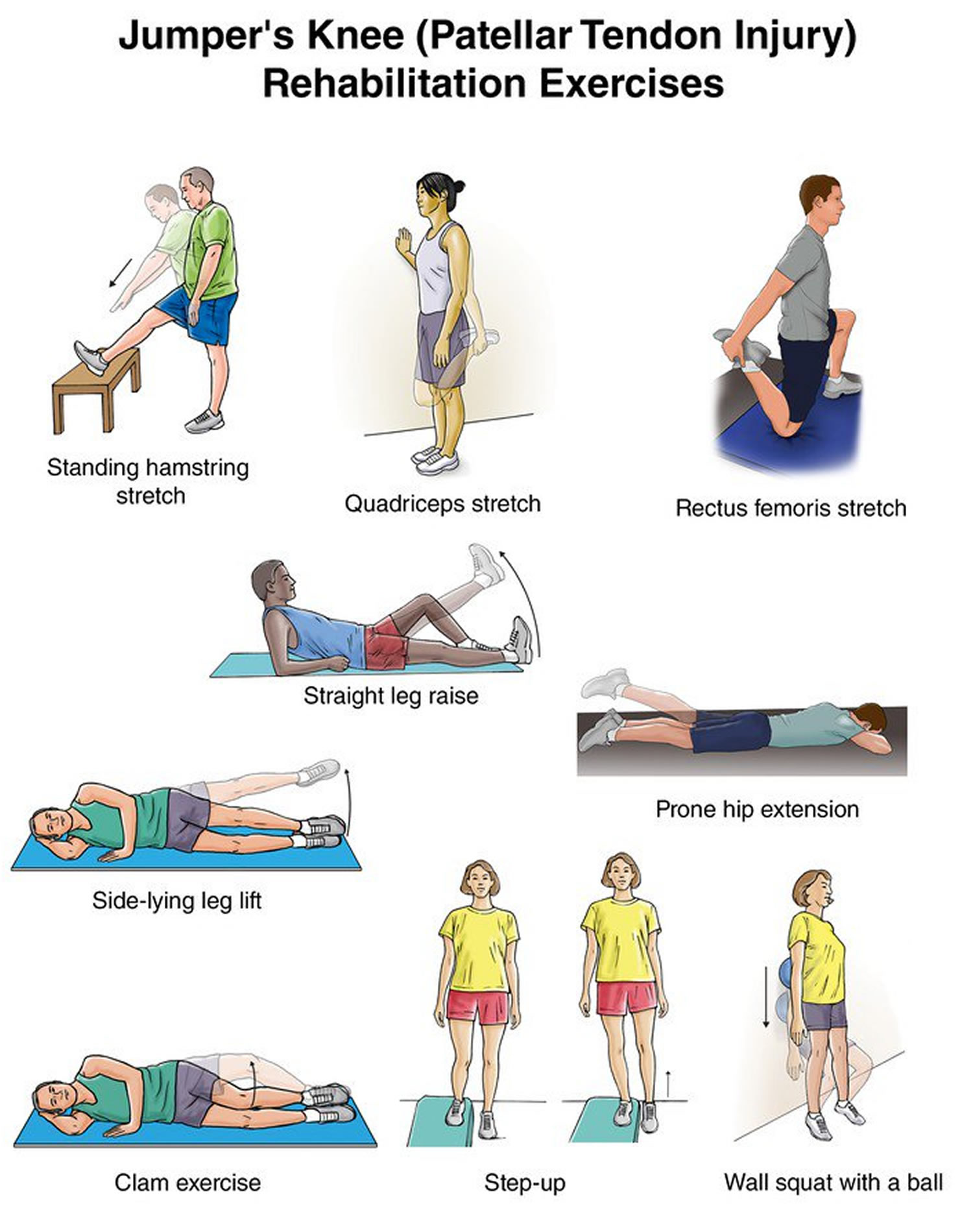
Figure 4. Patellar tendinitis exercises (part 2)
Surgical and other procedures
If conservative treatments don’t help, your doctor may suggest other therapies, such as:
- Corticosteroid injection. An ultrasound-guided corticosteroid injection into the sheath around the patellar tendon may help relieve pain. But these types of drugs can also weaken tendons and make them more likely to rupture.
- Platelet-rich plasma injection. This type of injection has been tried in some people with chronic patellar tendon problems. Studies are ongoing. It is hoped the injections might promote new tissue formation and help heal tendon damage.
- Surgery. In rare cases, if other treatments fail, your doctor might suggest surgical repair of the patellar tendon. Some procedures can be done through small incisions around your knee.
- Fredberg U, Bolvig L. Jumper’s knee: Review of the literature. Scand J Med Sci Sports. 1999;9:66–73. https://www.ncbi.nlm.nih.gov/pubmed/10220839[↩]
- Rath E, Schwarzkopf R, Richmond JC. Clinical signs and anatomical correlation of patellar tendinitis. Indian Journal of Orthopaedics. 2010;44(4):435-437. doi:10.4103/0019-5413.69317. https://www.ncbi.nlm.nih.gov/pmc/articles/PMC2947732/[↩]
- Miller MD Hinkin DT Wisnowski JW. The efficacy of orthotics for anterior knee pain in military trainees: a preliminary report. Am J Knee Surg. 1997;10(1):10-13. https://www.ncbi.nlm.nih.gov/pubmed/9051172[↩]
- de Vries A Zwerver J Diercks R Tak I van Berkel S van Cingel R van der Worp H van den Akker-Scheek I. Effect of patellar strap and sports tape on pain in patellar tendinopathy: A randomized controlled trial. Scand J Med Sci Sports. 2015. 10.1111/sms.12556[↩]
